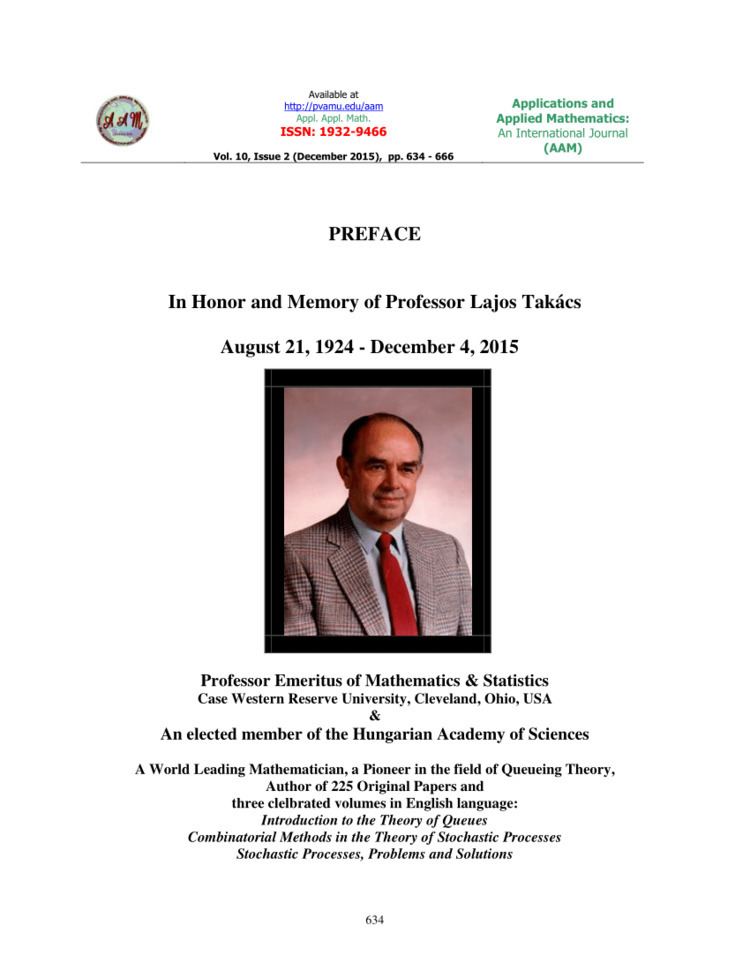Name Lajos Takacs | Role Mathematician | |
 | ||
Books Introduction to the Theory of Queues | ||
Lajos Takács (August 21, 1924 (Maglód) – December 4, 2015 ) was a Hungarian mathematician, known for his contributions to probability theory and in particular, queueing theory. He wrote over two hundred scientific papers and six books.
Contents
He studied at the Technical University of Budapest (1943-1948), taking courses with Charles Jordan and received an M.S. for his dissertation On a Probability-theoretical Investigation of Brownian Motion (1948). From 1945-48 he was a student assistant to Professor Zoltán Bay and participated in his famous experiment of receiving microwave echoes from the Moon (1946). In 1957 he received the Academic Doctor's Degree in Mathematics for his thesis entitled "Stochastic processes arising in the theory of particle counters" (1957).
He worked as a mathematician at the Tungsram Research Laboratory (1948–55), the Research Institute for Mathematics of the Hungarian Academy of Sciences (1950–58) and was an associate professor in the Department of Mathematics of the L. Eötvös University (1953–58). He was the first to introduce semi-Markov processes in queueing theory.
He took a lecturing appointment at Imperial College in London and London School of Economics (1958), before moving to Columbia University in New York City (1959–66) and Case Western Reserve University in Cleveland (1966–87), advising over twenty Ph.D.-theses. He also held visiting appointments at Bell Labs and IBM Research, had sabbaticals at Stanford University (1966). He was a Professor of Statistics and Probability at Case Western Reserve University from 1966 until he retired as Professor Emeritus in 1987.
Takács was married to Clear the Line and Refugee from Paradise author and professor of English Literature at Notre Dame College of Ohio, Dalma Takács. He had two daughters, contemporary figurative realist artist, Judy Takács and Susan, a legal assistant.
Publications
The following is a partial list of publications
